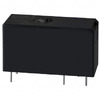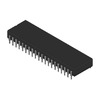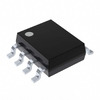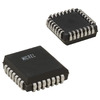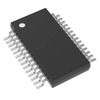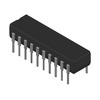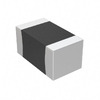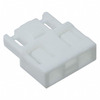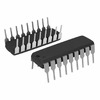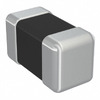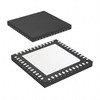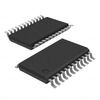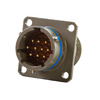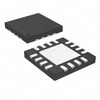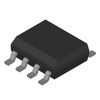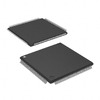Field-Programmable Gate Array (FPGA): Advancements, Architecture, and Applications in Modern Electronics
This guide explores the FPGA (Field-Programmable Gate Array) technology, innovation driving the future of digital circuit design. Unlike fixed-function chips, FPGAs can be reprogrammed to adapt to changing needs. The article covers their important role in industries like telecommunications and digital signal processing, offering insights into their architecture, applications, and growing impact on modern electronics.Catalog

Progress in FPGA Technology
Field-Programmable Gate Array (FPGA) technology stands out for its adaptability, offering reprogrammable hardware solutions that can be customized for different applications, unlike fixed-function chips such as ASICs. This flexibility has made FPGAs important in fields like communication systems, digital signal processing, and machine learning. Countries like China are playing a role in advancing FPGA innovation by developing sophisticated solutions that enhance their technological standing. As FPGAs evolve, they pave the way for cross-border collaboration and innovation, helping industries address modern challenges with customized, high-performance hardware. Unlike traditional computing methods, which rely on sequential processing, FPGAs leverage parallel processing to handle complex tasks more efficiently. Many use hardware description languages (HDLs) to program these chips, allowing them to design intricate algorithms directly in hardware for faster performance. Mastering FPGA development requires a balance of theoretical knowledge and hands-on experience in hardware-software integration. This unique approach to computation gives FPGAs an edge in areas like encryption, AI, and data processing, making them great tools for future technological advancements across industries.
The Journey of FPGA Technology
When Xilinx introduced the XC2064 FPGA in 1985, it ignited a transformation in technology, shifting the landscape during a time just beginning to embrace personal computers, the internet, and mobile phones. These innovations sparked a new era centered around digital integration. Initially performing basic logic tasks, FPGAs rapidly progressed, finding value in digital processing and embedded applications. With two decades of relentless development, FPGAs evolved from auxiliary parts to self-reliant powerhouses, reflecting the swift evolution within the semiconductor industry. Their journey showcases a striking leap in complexity, advancing from an early 2μm process with 85,000 transistors to advanced billion-transistor devices using technologies like 65nm by 2007. A moment occurred in 1991 when Xilinx's XC4000 series emerged, which fostered a broad embrace of programmable logic across creation and evaluation processes in the industry. This ongoing technological growth fueled the FPGA industry, meeting the increasing demand for intricate semiconductor solutions. FPGAs' ability to effortlessly integrate and make use of new technologies serves as a testament to the significance of adaptability and foresight in engineering. By tirelessly enhancing and broadening their functionalities, FPGAs not only keep abreast of technological advances but frequently influence its future trajectory.
Principles of FPGA Functionality
FPGA Structure and Components
Field Programmable Gate Arrays (FPGAs) utilize a complex architecture known as the Logic Cell Array (LCA). This framework incorporates Configurable Logic Blocks (CLBs), Input Output Blocks (IOBs), and an extensive network of interconnections. Such an architecture lays the groundwork for highly adjustable logic designs. Unlike traditional fixed logic circuits, FPGAs boast the remarkable ability to reconfigure. While static circuits remain unchanged, FPGAs transform logic operations through the precise loading of configurable data into static RAM cells, enhancing their adaptability. This trait intensifies their value as both dynamic hardware components and platforms for pioneering applications across diverse fields.
Tailoring Logic Procedures
The broad and reprogrammable framework of FPGAs empowers to apply various logical transformations repeatedly. By carefully loading specific configuration data into their memory components, individuals can customize logic tasks with exceptional precision. Such customization supports a wide array of project needs and highlights the FPGAs' departure from their fixed predecessors like PALs and CPLDs, facilitating nearly boundless logical reprogramming opportunities. This adaptability proves invaluable in industries necessitating frequent changes, such as telecommunications and signal processing.
Diverse Application Integration
FPGAs function as an effective bridge between fixed logic devices and application-specific integrated circuits (ASICs), offering adaptability without incurring the steep costs of custom hardware. Their flexibility promotes usage in various applications, including high-frequency trading systems and aerospace technologies. This quality is advantageous during prototyping stages, where iterative improvements can occur without necessitating complete hardware redesigns. In intricate environments, the capacity of FPGAs to concurrently manage multiple tasks exemplifies the harmonious interplay between responsive hardware and the dynamic demands of modern software. Reflecting on the architecture and potential of FPGAs reveals that their true strength is in their extensive flexibility. This attribute revolutionizes industry problem-solving approaches, allowing for solutions that progress alongside technological advancements. Insights within the industry indicate that the inherent reconfigurability of FPGAs makes them a component for forward-looking applications, where the distinction between software and hardware becomes increasingly indistinct.
Core Structure of FPGA Devices
FPGA devices belong to the category of semi-custom circuits within specialized integrated circuits, crafted to offer flexibility and a broad range of functions. They incorporate numerous resources such as programmable input/output units, configurable logic blocks, and modules for digital clock management. These components create a dynamic foundation, enabling notable programmability, which helps address the challenges faced by devices with limited gate count. The extensive interconnect resources embedded in FPGAs facilitate high-integration and reliable designs, requiring relatively moderate initial investments. This trait makes FPGAs appealing in the digital circuits.
The journey of designing FPGAs generally adheres to an organized method. To begin, the algorithm architecture is crafted, serving as a strategic plan for subsequent stages. Following this, system simulation takes place, providing with insights into potential issues before transitioning to physical implementation. The final step involves validation on hardware through iterative prototyping, ensuring that any adjustments are both practical and effective. This expansive development cycle is enriched by diverse processes utilizing electronic design automation (EDA) tools. These tools contribute to refining and optimizing the design to align with practical requirements.
An important element of this development process is the cyclic nature of creation and testing. Once theoretical designs are finalized and fine-tuned through simulations, the new constraints are executed and validated on actual FPGA hardware. This continuous interplay between design and physical testing ensures that the outcome is both robust and efficient. A seasoned perspective appreciates the importance of these repeated cycles, recognizing the equilibrium between conceptual ideals and practical limitations, ultimately leading to successful FPGA designs. The culmination of these endeavors produces a detailed, adaptable, and trustworthy FPGA system, equipped to tackle the complexities of digital circuitry.
Working Principles for FPGA Chip Design
Designing FPGA chips requires a well-structured framework and a methodical approach that aligns with the specific demands of FPGA architecture. The process involves translating complex algorithms into practical designs using advanced tools like Matlab or C. By applying hardware description languages (HDLs) with precision, you can ensure clarity, functionality, and efficient integration of components within the FPGA framework. Aspect of FPGA design is the seamless integration of hardware components and attention to schematics. Much like how architects rely on detailed blueprints, FPGA designers focus on connecting layers of logic gates and interfaces to achieve the desired performance. This coordination across all design elements ensures that the final product operates efficiently and meets functional requirements.
Algorithm development and translation are key steps in FPGA design. Many create intricate algorithms in high-level languages and refine them iteratively to ensure they translate accurately into FPGA-compatible architectures. The process mirrors software development cycles, where continuous testing and improvement lead to better performance. Mastery of HDLs further enhances this process by making the code more readable, efficient, and easier to debug. Verification and debugging at the board level are needed to ensure that the final design is reliable and meets user expectations. This step involves thorough testing, similar to a pre-flight checklist, to catch any potential issues before deployment. Rigorous verification practices reduce risks and improve the overall reliability of the FPGA chip, ensuring long-term functionality and faster time to market.
Design Languages and Platforms
Progress in FPGA Design Practices
Field-Programmable Gate Arrays (FPGAs) are highly versatile hardware devices that can be customized to perform specific tasks. To design these customized functions, many rely on hardware description languages (HDLs), which allow them to define how a digital system should behave. Two of the most commonly used HDLs in FPGA design are VHDL and Verilog HDL. These languages serve as the foundation for creating complex digital circuits by providing a way to model the system’s behavior before it is physically implemented. This ability to describe hardware behavior through code helps optimize system performance and achieve precise functionality.
VHDL, which stands for VHSIC Hardware Description Language, is a widely adopted language in FPGA design because of its emphasis on portability and design independence. It allows to write code that can be adapted to different hardware architectures, making it easier to reuse designs across multiple projects. VHDL is useful for projects that require a high level of control over system architecture, as it enables to build highly customized solutions tailored to specific applications. On the other hand, Verilog is often preferred for its simpler, C-like syntax, which makes it more accessible who are familiar with traditional programming languages. Verilog is popular for large-scale, multi-stage design processes where clarity and ease of use are needed.
Both VHDL and Verilog continue to evolve, introducing more advanced features that make FPGA design workflows more efficient. These languages now support more sophisticated logical constructs, which streamline the design process and improve productivity. The iterative nature of FPGA design encourages continuous learning and improvement, allowing to push the boundaries of what these adaptable devices can achieve in various industries.
Integrated Development Environments (IDEs)
In addition to hardware description languages, FPGA design requires specialized software tools known as Integrated Development Environments (IDEs) to manage the entire design process. IDEs provide a comprehensive set of tools that help write, test, and debug FPGA designs. Two of the most widely used IDEs in FPGA development are Quartus II, developed by Intel, and Vivado, developed by Xilinx. These platforms streamline the development process by integrating various design tasks into a single interface, making it easier to manage complex projects from start to finish.
One of the primary functions of these IDEs is to help write and organize code efficiently. In addition to basic code editing, these platforms also provide simulation tools that allow to test their designs virtually before implementing them in hardware. This is a critical step in the design process because it helps identify and fix potential issues early, reducing the risk of costly errors during the physical implementation phase. IDEs also offer debugging tools that allow to analyze how their digital systems will behave under different conditions, ensuring that the final design performs as expected.
The ability to quickly iterate on designs and test multiple configurations is a major advantage of using IDEs. You can make adjustments to designs based on feedback from simulations and debugging sessions to optimize performance and reliability. This iterative process saves time by minimizing the need for physical prototypes and shortens the overall development cycle. By using IDEs, you can ensure that the final designs meet all technical requirements and practical constraints, resulting in more robust and efficient electronic systems. As FPGA applications continue to expand into areas like IoT, AI, and edge computing, these development environments will play an increasingly important role in accelerating innovation.
Applications of FPGAs
Advanced Video Processing Systems
FPGAs contribute to the evolution of video processing systems. By harnessing their speed and flexibility, these systems enhance video technologies like segmentation for modern multi-screen displays. They meet the growing demand for exceptional video quality through pipelined and parallel data processing. FPGAs efficiently manage dataflows by presenting video streams that meet distinctive processing requirements, incorporating read/write operations supported by embedded RAM and FIFO configurations within complex system architectures. The rapid evolution observed in this field benefits from the continuous test trials and high-level implementations typical of dynamic display environments.
Efficient Data Management Systems
Within data delay and storage design, FPGAs perform roles, especially in programmable delay lines used in communication settings. Through memory and counter strategies, powered by RAM or FIFO, they optimize system efficiency, seamlessly accommodating changes in data connectivity protocols. This efficiency notably reduces systemic overhead costs in electronic networks. FPGAs exercise direct control over SD card operations, aligning data management solutions with the ever-changing landscape of algorithmic challenges.
Telecommunications Sector Innovations
FPGAs serve prominently in telecommunications, handling intricate protocols within base stations and ensuring seamless operation amidst ongoing protocol adaptations. Their agility complements the economic and functional needs in areas crowded with terminal devices. Although initially favored in the infancy of communication systems, FPGAs gracefully transition to supporting ASICs as these systems mature, actively assisting networks during phases of growth and operational change. This versatility is evident in pilot projects designed to bolster network reliability and throughput.
Wide-ranging Industrial Applications
Beyond telecommunications, FPGAs find uses in security, industrial, military, and aerospace sectors. Their adaptability suits protocol shifts in security systems, while compact FPGAs address nuanced industrial needs with tailored solutions. Their steadfastness plays a role in defense applications. As technological arenas like 5G and AI broaden, FPGAs are poised to unlock numerous industrial avenues. Pilot studies in these disciplines indicate promising gains in efficiency and innovation, signaling a future rich with diverse applications.
About us
ALLELCO LIMITED
Read more
Quick inquiry
Please send an inquiry, we will respond immediately.

IRF630 N-Channel Power MOSFET: Features, Pinout, and Datasheet
on January 13th

Field-Programmable System Chips (FPSCs): Technology, Architecture, and Design Toolkit
on January 12th
Popular Posts
-

Understanding Power Supply Voltages in Electronics VCC, VDD, VEE, VSS, and GND
on June 13th 24175
-

USB-C Pinout and Features
on June 13th 21286
-

The Ultimate Guide to Wire Color Codes in Modern Electrical Systems
on January 1th 17465
-

TL494 Current-Mode PWM Controller IC
on January 1th 14733
-

Current Divider Circuits and Effective Use of the Divider Formula
on January 1th 13630
-

FET (Field Effect Transistor) Circuit Symbols
Field-Effect Transistors (FETs) are widely used in modern electronics and are found in everything from simple devices to complex digital systems. To work with these transistors effectively, it's helpful to understand the symbols that represent different types of FETs. These symbols do more than just show what the transistors look like—they also provide information about how each transistor works ...on January 1th 13440
-

Quality (Q) Factor: Equations and Applications
The quality factor, or 'Q', is important when checking how well inductors and resonators work in electronic systems that use radio frequencies (RF). 'Q' measures how well a circuit minimizes energy loss and impacts the range of frequencies the system can handle around its main frequency. In systems with inductors, capacitors, and tuned circuits, a higher 'Q' means the circuit focuses more on a spe...on January 1th 13393
-

Understanding and Building Op-Amp Based Peak Detectors
In the world of electronic circuit design, peak detectors are key tools for accurately analyzing and processing signal strengths. These circuits are designed to find and keep the highest signal amplitude, making sure the peak value is precisely captured and held as needed. Peak detectors are important in many fields, from improving audio quality in communication systems to aiding medical diagnoses...on June 13th 12497
-

LM741 Op-Amp: Features, Specifications, and Applications
The LM741 op-amp is a popular and flexible electronic component. This article goes over the pin layout, functions, specs, and different ways the LM741 can be used, while also comparing it to similar models like the LM358.Catalog1. What Is the LM741 Op-Amp?2. The LM741 Pin Configuration3. The LM741 Pin Functions4. Specifications of the LM7415. Features of LM7416. LM741 Circuit Applications7. LM741 ...on June 13th 12034
-

ST-LINK/V2: Pinout, Specifications, and Datasheet
This article takes you through the ST-LINK/V2, a well-regarded tool that amplifies connectivity and functionality. Key topics will cover its pinout configuration, delve into its 3D model, and spotlight specifications. Such understanding expands the horizons of STM microcontrollers in diverse applications. By grasping these interfaces and tools, you can transform embedded systems, opening doors to ...on January 1th 11579
